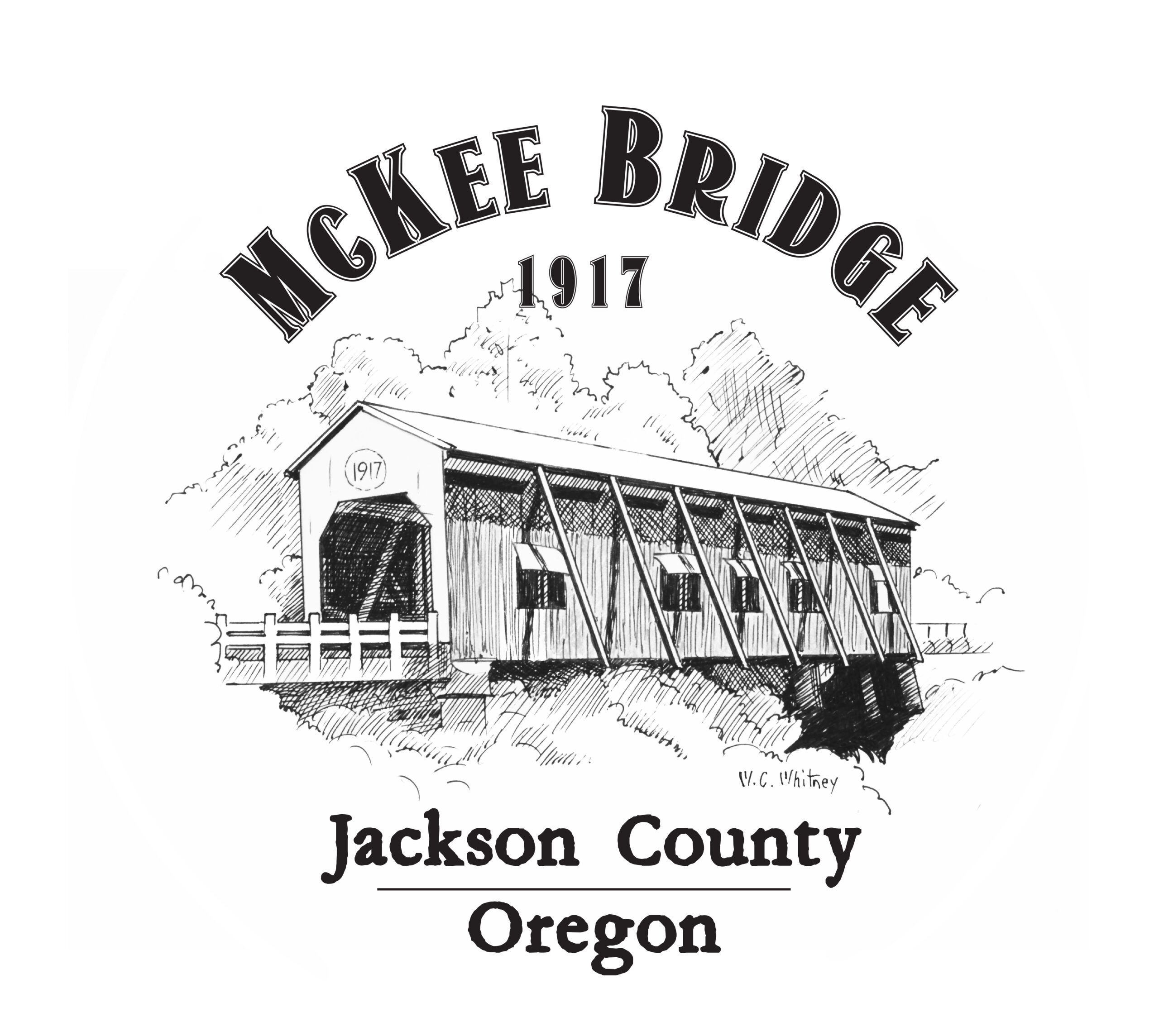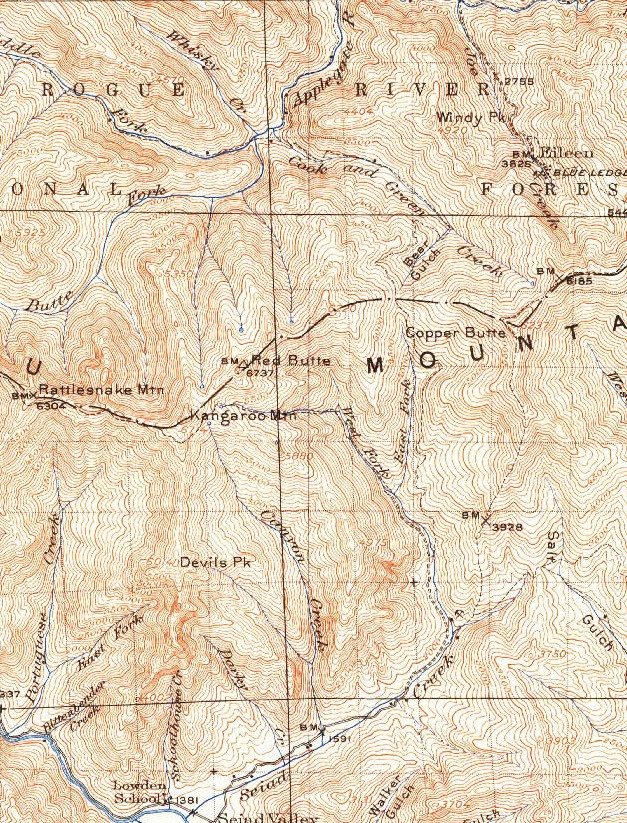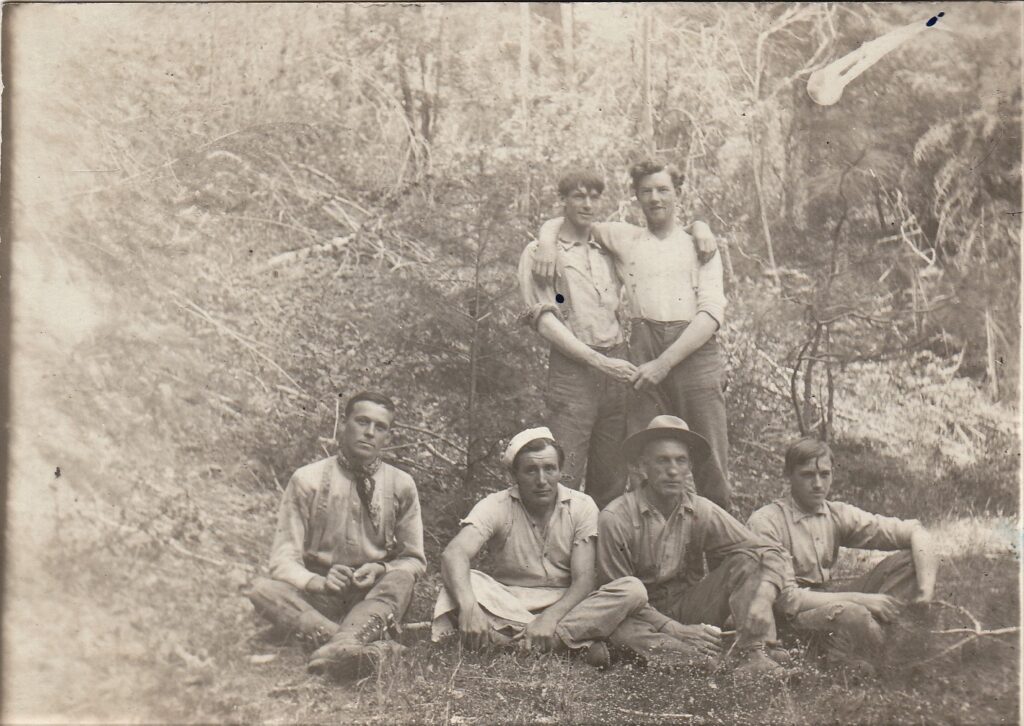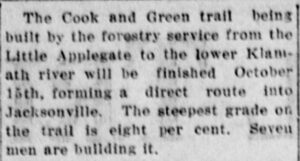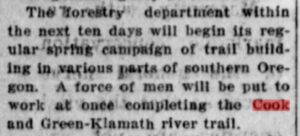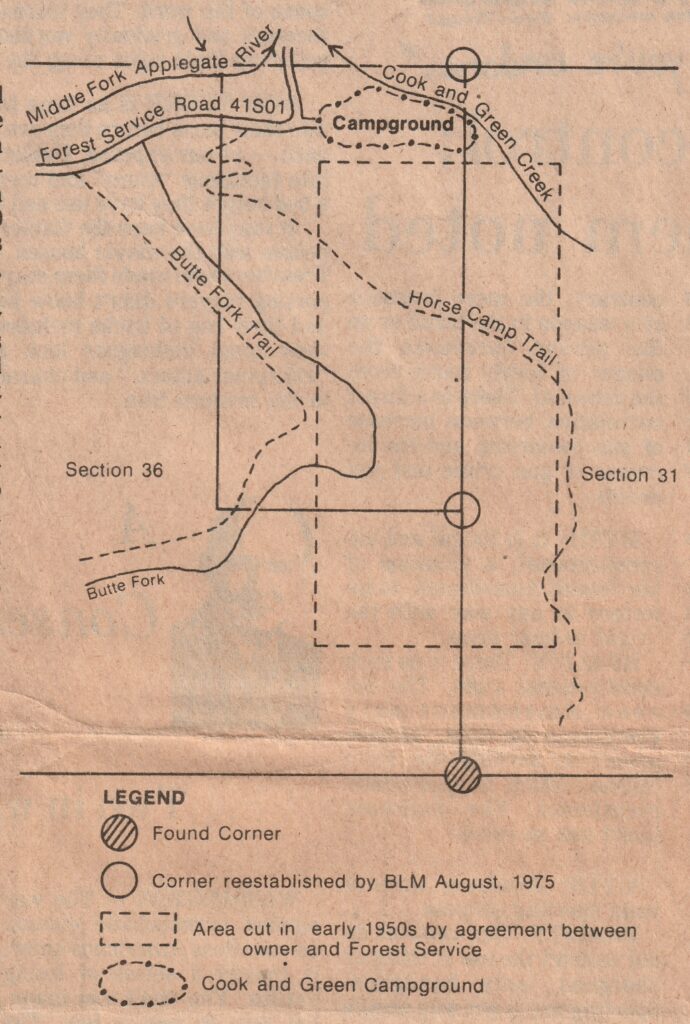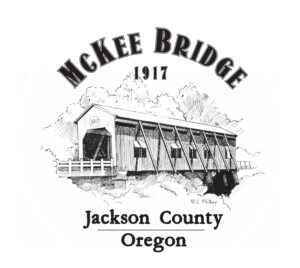Cook & Green Trail
There was no true “trail” along Cook & Green Creek until late 1915. Robert Cook and William A. Green were trappers with the Hudson’s Bay Company (HBC). Apparently Cook and Green followed tracks worn by wildlife and indigenous peoples from the Middle Fork of what would become known as Applegate Creek, scouting south over the Siskiyou Crest to Seiad Valley. A creek off the Middle Fork became known as Cook & Green, the name of the ranch they established on the Klamath River in the 1850s. Green was the postmaster when the Seiad post office was founded in 1858 and served until 1861.
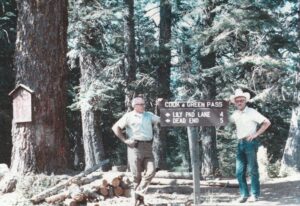
Lee Port Jr. and Morris Byrne near Cook & Green Pass
Over the years, three myths developed about the identities of Cook and Green. One is traced to Lee Port Sr. (1889-1956), the Applegate District Ranger for the Rogue River National Forest (and father of Lee Jr., shown in this 1970s photograph). Lee Sr. didn’t come to Oregon until around 1910. In 1945, after his retirement, he related some “Notes on Historical Events.” Of course, Lee Sr. was not a first-hand witness to most of these events; he was relaying rumors and lore, often with his own twist or misinterpretation. His Note regarding Cook & Green (reported and typed by an unknown intermediary) reads:
 Could Lee Sr. have meant the HBC trappers and Seiad Valley settlers? If so, he didn’t disclose their full stories, and misplaced their activities in the 1870s.
Could Lee Sr. have meant the HBC trappers and Seiad Valley settlers? If so, he didn’t disclose their full stories, and misplaced their activities in the 1870s.
The second mythological line emerged in U.S. Forest Service studies published more than three decades after Lee Port’s “Notes”:

LaLande, Prehistory and history of the Rogue River National Forest: a cultural resource overview (1980).

